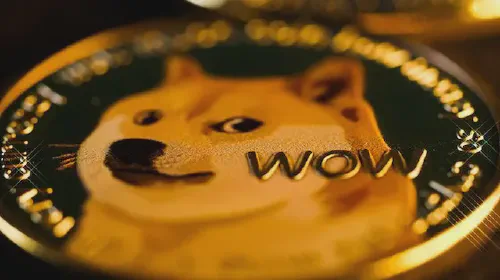Polygon vs. Polkadot - Key Differences and Investment Potential [2023]
Salomon Kisters
Feb 28, 2023This post may contain affiliate links. If you use these links to buy something we may earn a commission. Thanks!
There is no arguing that blockchain technology is the foremost innovation of the 21st century. A debate on this topic is sure to end in favor of adherents of this unique technology.
Today, almost every other sector is influenced by blockchain tech. If you have kept a close watch over this revolutionary invention, then you might be well aware of the way blockchain is transfiguring different industries.
Every day, investors and crypto enthusiasts search high and low for information about assets they wish to invest in. This article is a great help for anyone interested in investing in Polkadot and Polygon.
It contains all the necessary information about the Polkadot and Polygon blockchains, their contrasting features, and the perks of adopting their use. Both Polygon and Polkadot are leading blockchains, currently being eyed by countless investors and traders throughout the world.
A Brief Intro to Polkadot
Among the challenges faced by the crypto world today, perhaps the most pressing is the need for more communication and transfer channels between existing blockchains. Investors and traders have had to put up with this problem for almost a decade before Polkadot finally came around.
So, what exactly is Polkadot? Well, it can be best defined as a ’linking bridge between multiple blockchains’. It serves as a conduction channel between different blockchains that permits the transfer of not just tokens but also data and assets.
Polkadot is a state-of-the-art blockchain protocol that offers its users a 100% transparent, seamless, and swift experience to its users.
The firm connects various blockchains and distributed systems, allowing interoperability between them. Moreover, it also enables users to lay the foundations of their own blockchain networks and house decentralized applications on top of them.
A Quick Look at Polygon
Web 3.0 is revolutionizing the world in ways beyond our imagination. Polygon was founded to channel the benefits derived from the groundbreaking powers of Web 3.0 for the benefit of common people.
The firm aspires to provide an excellent platform with the necessary tools to create user-oriented dApps. Through the provision of a dApp-creating facility, Polygon intends to encourage mass adoption of Web 3.0 and a great opportunity for the wider population to enjoy its numerous benefits.
Polygon was created back in 2017 by Mumbai-based developers for other developers in the crypto space, thus, putting an end to the monopoly of firms that allowed dApp creation. Polygon allows you to devise apps that make no compromise on security and efficiency while at the same time ensuring the cost-effectiveness of their services.
Not only this, but the firm is a reflection of all the attributes of the Ethereum blockchain. It is also more powerful and secure and demands low transaction fees compared to its counterparts.
Differences between Polkadot (DOT) and Polygon (MATIC)
Polygon and Polkadot are two of the most discussed projects among investors today. The firms are poles apart, but both have something unique and beneficial to offer.
The following are the most fundamental differences between the two blockchains:
Polygon can be best understood as an ’extension blockchain’ or, more accurately, as a layer-2 solution. On the other hand, Polkadot is a project based on the wider Web 3.0 application.
The creation of Polygon dates back to October 2017. On the flip side, the foundations of Polkadot were laid down in 2016, but it wasn’t until 2020 that the project was fully deployed and became operational.
Polygon was devised to scale Ethereum. In simple words, it increases the transaction speed of its parent blockchain without increasing the validating costs. In comparison, Polkadot makes use of its relay blockchain to complete transactions.
The firms have a huge difference in the total quantity and circulating supply of their tokens. According to CoinGecko (Feb 2023), the total supply of the MATIC token is 10,000,000,000, and the circulating supply is 9,005,469,069. Meanwhile, the total supply of DOT tokens is 1,283,371,260, and the circulating supply is 1,202,422,127.
The polygon network offers smart contracts development and maintenance, while Polkadot’s relay chain does not offer this support. However, Polkadot users can use smart contract features by utilizing the Parachains.
Polygon was created to improvise interoperability between heterogeneous blockchains. To achieve this end, the firm uses its sidechain framework to allow data, asset, and token transfer. The attribute of permitting inter-chain operations needs to be improved in Polkadot. The firm only allows the transfer of data and tokens between the relay and parachains.
Polkadot uses the Nominated Proof-of-Stake consensus algorithms to determine the authenticity of transactions performed on the network. On the other hand, Polygon has a specially designed structure called Plasma Framework that has introduced many stations for scrutiny of transactions. The Plasma Framework uses the Proof-of-Stake (PoS) consensus mechanism.
Solidity, Remix, and web3.js are the languages offered by Polygon to users who wish to create and deploy smart contracts. On the other hand, Polkadot employs the Substrate framework and Rust language to devise dApps.
When it comes to governance, Polkadot has the upper hand over Polygon. The community governs Polkadot. This means that all the important governance decisions are made after consultation with community members and through voting. This helps mitigate the chances of interference by a rogue outsider. Polygon, in contrast, allows any individual to implement solutions in its ecosystem. This is a major loophole and increases the chances of a breach in security.
The transaction speed of Polygon remains unparalleled. It can complete up to 65,000 transactions in just one second. On the other hand, Polkadot can only manage 1,000 transactions per second.
Polygon plans on extending its reach by listing itself on other chains. Polkadot has similar plans but a different method of approach. Through the utilization of parachains and crypto bridges, the firm is gaining access to numerous blockchains.
Everyone in the community relishes a great residual source of income. Polkadot offers staking rewards between 7 and 12%, while Polygon can proffer around 5% only.
Similarities between Polkadot and Polygon
Apart from having similar names, the firms also have numerous similar traits. These include:
- Polygon and Polkadot act as stepping stones for creating NFTs, dApps, and DeFi solutions.
- Both firms are working tirelessly to improvise scalability among blockchain networks.
- Polygon and Polkadot are striving to enhance interoperability within blockchains. The firms are competing to bag the coveted ‘Internet of Blockchain’ title.
Polygon (MATIC) Price Analysis
A rapid decline in the price of Polygon marked the end of 2021. However, in the summer and spring of 2022, the MATIC token attained a standstill after it partnered with popular multinational companies like Coca-Cola and Disney.
Experts remain divided over MATIC price prediction. Some claim it to be a sound investment with a high probability of exploding. While others consider it a low-yield asset with no chance of making it to the top.
MATIC Price Prediction by WalletInvestor
According to this free-of-cost forecasting platform, the MATIC token will bend its knees to the bearish market trends and will hit as low as $0.035 by July 2023.
MATIC Price Prediction by Government Capital
This forecasting platform brings good news to investors who have put their money into Polygon. According to their prediction, the coin will reach $3.7 by the end of 2023 and an all-time high of $20 in 5 years.
Polkadot (DOT) Price Analysis
Polkadot currently holds the 12th position by market capitalization on CoinMarketCap. In the last two years, the token has increased in popularity among investors primarily due to its ability to respond to positive sentiments in the market and remain stable during bullish trends.
In November 2021, when the entire crypto market crashed, the price of DOT hit its lowest. Despite this decline in value, the token holds great potential to be adopted by businesses throughout the world and is expected to witness major improvements in its price in future.
Polkadot (DOT) Price Prediction by Changelly
According to experts at Changelly, the minimum expected price of DOT in 2025 will be $17.46, while the highest maximum price will be around $20.78. These predictions are based on technical analysis by experts.
Polkadot (DOT) Price Prediction by CoinCodex
According to this pre-eminent crypto price prediction site, the price of Polkadot will reach $199.37 if it follows Facebook’s growth prediction. However, if the firm follows internet growth, it may attain a high of just $22.87. The DOT token has a high probability of soaring in the next few yea
Stay informed with the latest insights in Crypto, Blockchain, and Cyber-Security! Subscribe to our newsletter now to receive exclusive updates, expert analyses, and current developments directly to your inbox. Don't miss the opportunity to expand your knowledge and stay up-to-date.
Love what you're reading? Subscribe for top stories in Crypto, Blockchain, and Cyber-Security. Stay informed with exclusive updates.
Please note that the Content may have been generated with the Help of AI. The editorial content of OriginStamp AG does not constitute a recommendation for investment or purchase advice. In principle, an investment can also lead to a total loss. Therefore, please seek advice before making an investment decision.

Polkadot vs. Solana: A Comprehensive Comparison of Strengths and Weaknesses
Learn about the strengths and weaknesses of Polkadot and Solana, two major players in the blockchain industry, to decide which is better suited for your needs.

Monero vs. Bitcoin: Understanding the Variances
Learn about the differences between Monero and Bitcoin, two popular cryptocurrencies, and choose the best option for your needs.

What Is Dogecoin and How Does it Work?
Dogecoin is a user-friendly cryptocurrency with a Shiba Inu meme mascot. Unlike Bitcoin, it has no supply cap, making it inflationary. Its popularity spiked with Elon Musk's support, blending internet culture and financial innovation for wide appeal.
Protect your documents
Your gateway to unforgeable data. Imprint the authenticity of your information with our blockchain timestamp